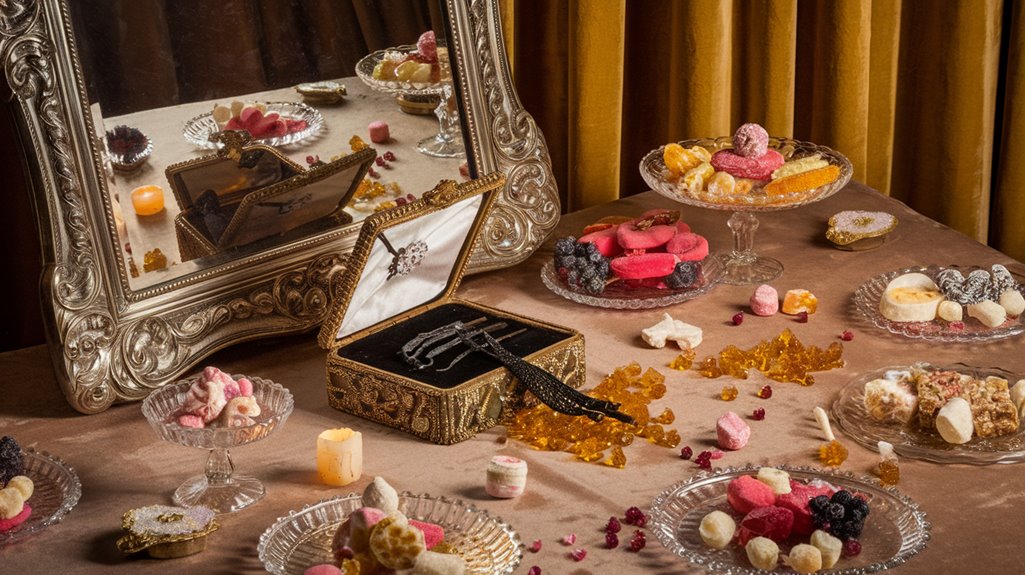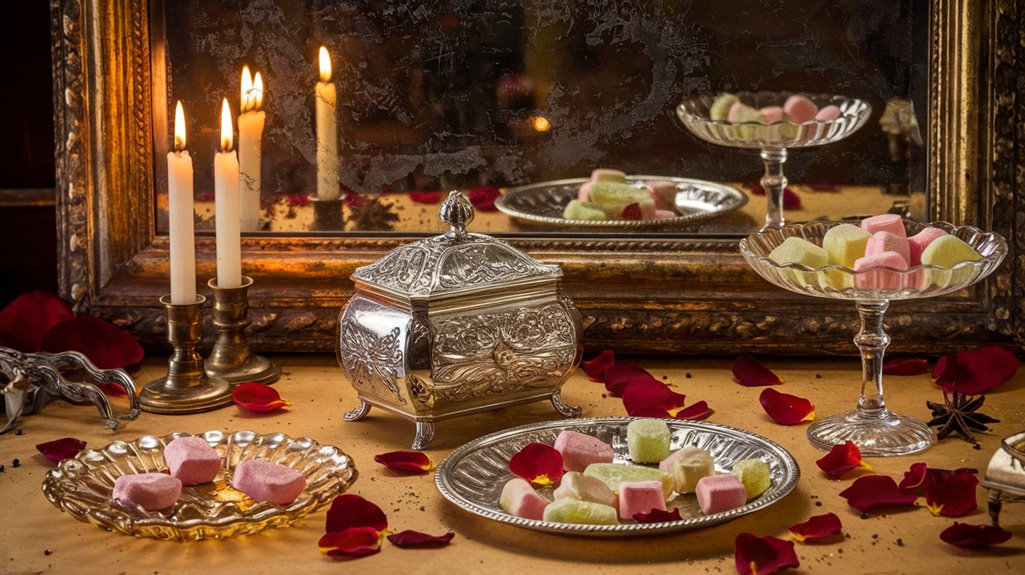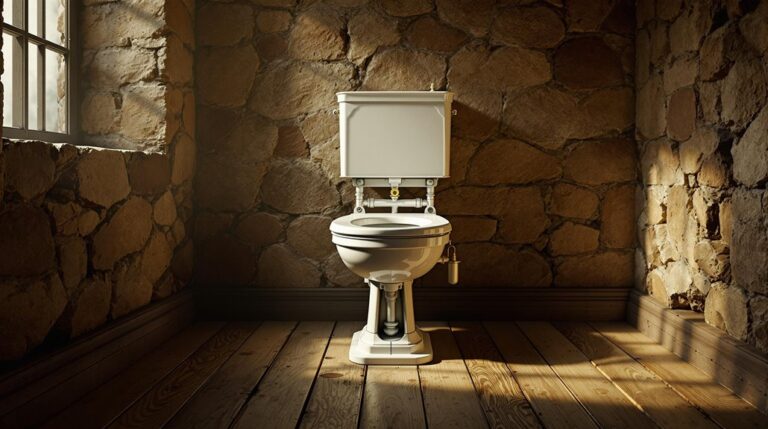Queen Elizabeth I’s Excessive Sugar Consumption Turned Her Teeth Black
You've probably heard about Queen Elizabeth I's iconic red hair and pale complexion, but there's a darker side to her appearance that's often overlooked. During her reign in the 16th century, the Virgin Queen's smile told a peculiar story of wealth, status, and an insatiable sweet tooth. While today's beauty standards favor pearly whites, Elizabeth's blackened teeth weren't just accepted—they were admired. The reason behind this unusual trend reveals fascinating insights into Tudor England's relationship with sugar.
The Sweet Life of a Tudor Queen
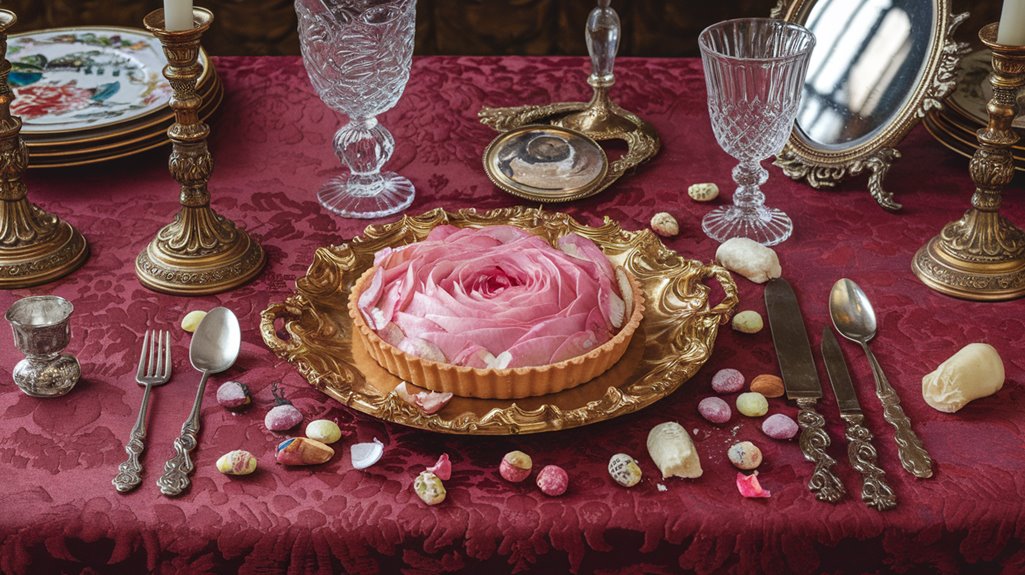
How did sugar become a symbol of power and prestige in Tudor England? During the 1500s, you'd find this precious commodity making its way from the East and West Indies, Morocco, and Barbary into the Tudor cuisine of England's elite.
While sugar production in the colonies increased its availability, it remained an expensive luxury that only the wealthy could afford.
You'll find that the English nobility, particularly Queen Elizabeth I, embraced sugar with tremendous enthusiasm. They incorporated it lavishly into their banquets and confectionery, with marzipan becoming a royal favorite. The queen's extraordinary love of sweets led to her using a sugar-based toothpaste daily. The queen's addiction was so severe that she demanded sugar daily with every meal she consumed.
The sugar trade transformed dining habits among the upper class, who used this sweetener extensively to showcase their wealth and status. However, this indulgence came at a steep price – their dental health would soon reveal the dark side of their sweet obsession.
When Black Teeth Became Fashionable
In a peculiar twist of Tudor fashion, black teeth emerged as a symbol of wealth and social status during Queen Elizabeth I's reign. You'd have witnessed the elite proudly displaying their decaying teeth as proof they could afford sugar, an expensive luxury at the time.
The queen's own dental problems, caused by her sweet tooth and sugar-based toothpaste, set one of history's most unusual fashion trends. The queen considered sugar so precious it was comparable to pearls in value. Henry VIII's confectioner worked tirelessly to create elaborate sugar treats for the royal court.
If you weren't wealthy enough to naturally achieve black teeth through sugar consumption, you might've resorted to using soot to artificially darken your smile. This trend, however, came at a steep cost to dental hygiene.
Without modern dentistry available, the upper class suffered severe tooth decay and health issues. The fashion eventually faded as sugar became more widely accessible to the general population.
Sugar's Status Symbol in 16th Century England
The allure of sugar extended far beyond its impact on dental fashion in 16th century England.
You'd find this precious commodity transforming elite banquets into spectacular displays of wealth and power. Sugar sculptures became centerpieces of these lavish events, where royalty and aristocrats would showcase their status through elaborate artistic creations.
Here's what made sugar such a powerful status symbol:
- Artists crafted intricate sugar sculptures that told stories and conveyed political messages.
- The ceremony of the void featured expensive sweetmeats as the grand finale of banquets.
- Only the wealthiest could afford to display sugar in such abundant quantities.
- Sugar's rarity made it more valuable than gold in trade.
These displays weren't just about taste – they were carefully orchestrated demonstrations of prestige that shaped English society's cultural norms. Venetian traders were responsible for bringing this coveted sweetener from the Middle East to European nobility. In its earliest form, sugar appeared as a gritty, gravel-like substance produced from dried cane extract.
The Price of Royal Indulgence: Elizabeth's Dental Decline
Despite her powerful reign and opulent lifestyle, Queen Elizabeth I paid a hefty price for her sugar indulgence. By the time she reached her fifties, her royal indulgence in sugary treats had devastating consequences: most of her teeth had either fallen out or turned completely black. Her personal struggles with dental health made her more relatable to her subjects, showing even queens weren't immune to common ailments.
Her switch from using honey to sugar paste for dental care only accelerated her dental problems. You might think a queen would have access to the best dental care, but even Elizabeth dreaded dental procedures. Without anesthesia available, she'd seek moral support from bishops before visiting barber-surgeons.
Her tooth loss made it increasingly difficult to speak clearly, forcing her to carefully manage her public appearances. While she may have taken comfort in knowing black teeth were fashionable among the elite, the pain and difficulties she experienced revealed the true cost of sugar consumption in Tudor England.
A Queen's Battle With Tooth Decay and Public Image
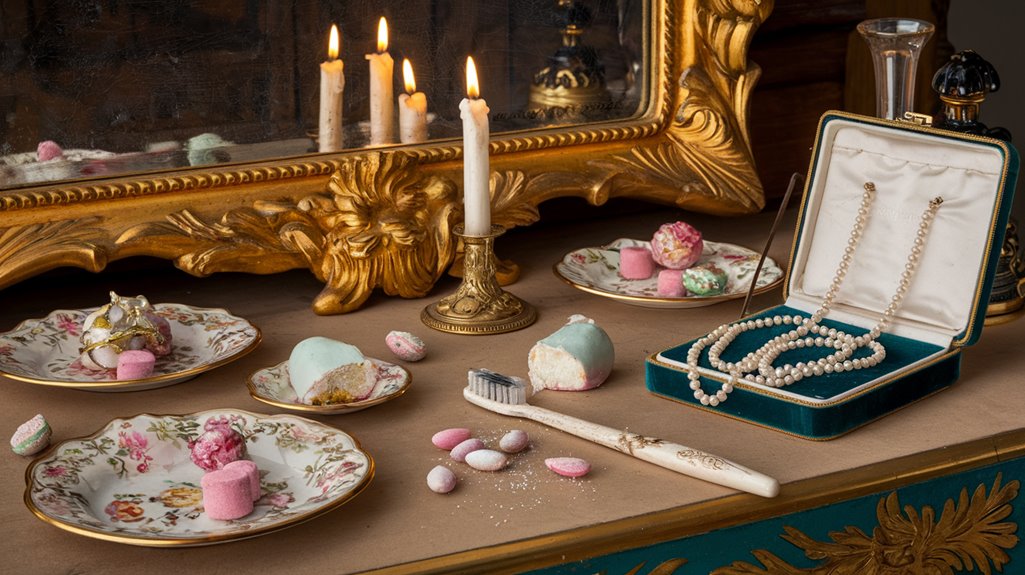
While Elizabeth I's black teeth became an unlikely fashion trend among England's elite, her personal battle with dental decay revealed the complex relationship between royal image and health in Tudor society.
You'll find that her dental hygiene practices, including sugar-based toothpaste and honey, actually worsened her condition. Historical records show she believed sugar had healing properties. Marzipan and other sugary confections were served at court regularly, demonstrating her well-documented sweet tooth. Despite her deteriorating teeth, Elizabeth masterfully managed her royal image by using cotton to fill gaps and carefully controlling public appearances.
- Her fear of dentistry prevented proper treatment, leading to severe decay
- The queen's sugar-heavy diet reflected her wealth but destroyed her teeth
- Foreign ambassadors struggled to understand her speech due to dental problems
- Courtiers used soot to blacken their teeth, mimicking the queen's appearance

